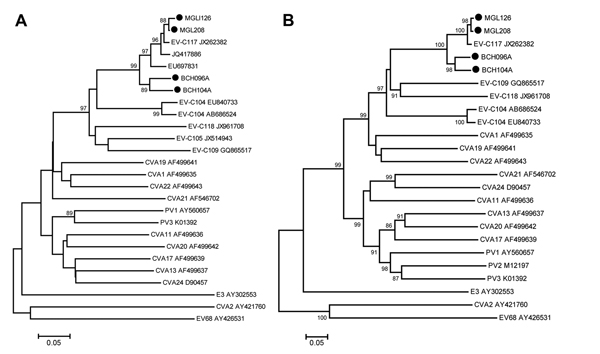Volume 20, Number 6—June 2014
Letter
Respiratory Infection with Enterovirus Genotype C117, China and Mongolia
Figure

Figure. Phylogenetic analysis of enterovirus genotype C117 (EV-C117) based on nucleotide sequencesPhylogenetic trees were generated with 1,000 bootstrap replicatesNeighbor-joining analysis of the targeted nucleotide sequence was performed by using the Kimura 2-parameter model with Molecular Evolutionary Genetics Analysis (MEGA) software version 4.0 (http://www.megasoftware.net)The EV-C117 strains identified in this study are indicated by black circlesEnterovirus 68, cocksackievirus (CV) A2, and echovirus (E) 3 (GenBank accession nosAY426531, AY421760, and AY302553) were used as outgroupsPV, poliovirusA) Phylogenetic analysis of the VP 4/VP2 region (399 nt, corresponding to nt 673–1,071 of EV-C117 prototype strain LIT22 [JX262382])B) Phylogenetic analysis of the viral protein1 region (888 nt, corresponding to nt 2416–3303, numbered according to the sequence of LIT22)Scale bars represent nucleotide substitutions per site.
1These authors contributed equally to this work.